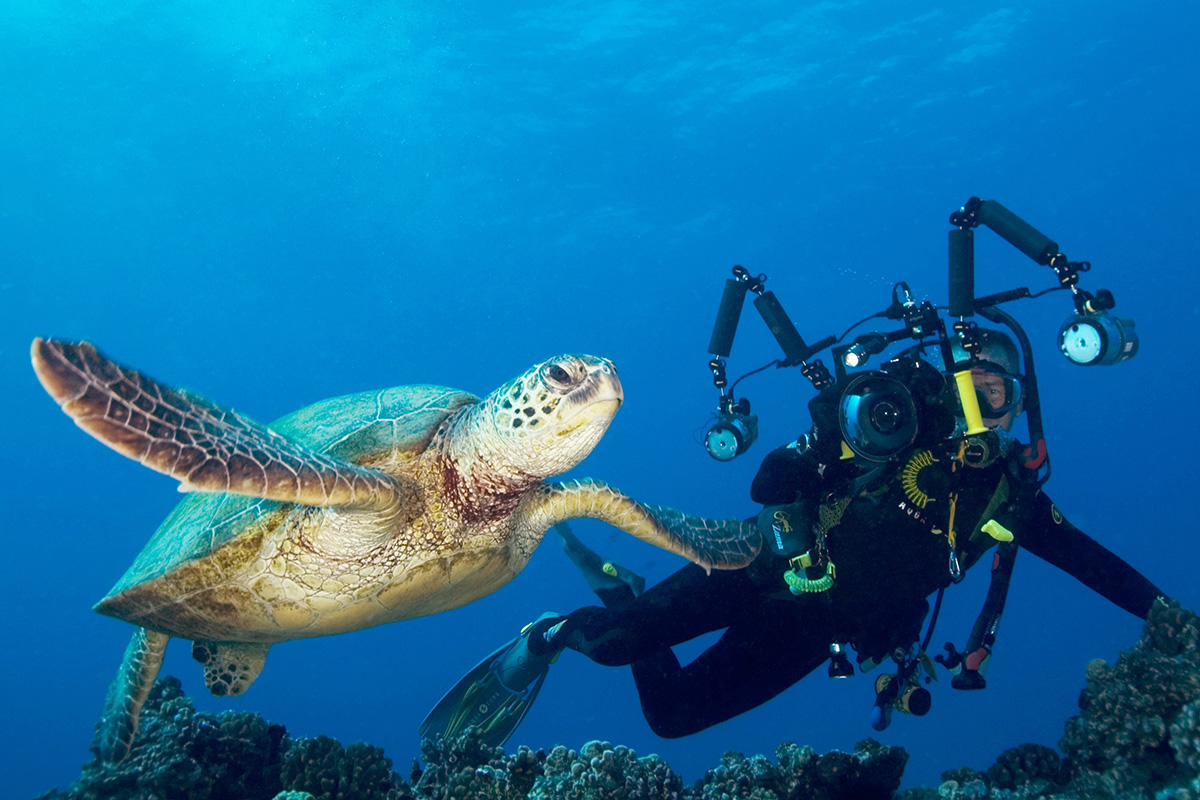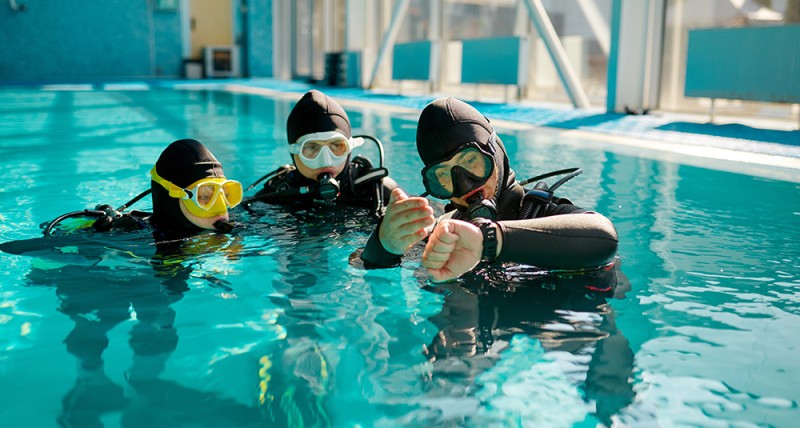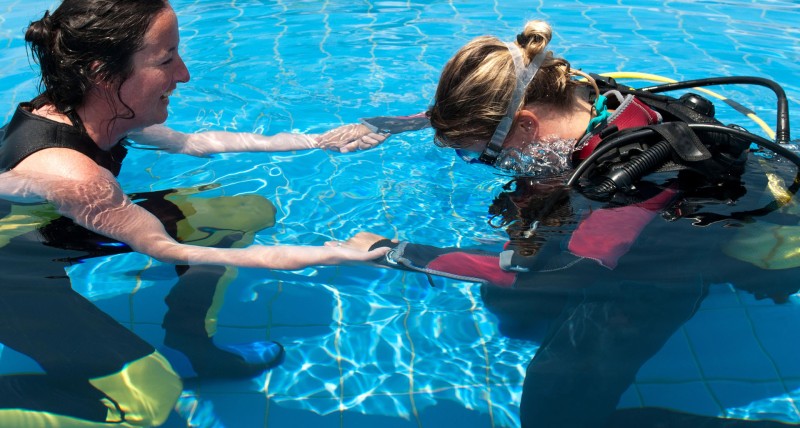Tobago Scuba Diving: Why This Caribbean Drift Diving Destination Should Be on Your Bucket List
When most divers think of Caribbean scuba diving, islands like Bonaire, Cozumel, or Grand Cayman often come to mind. Tobago? Not so much. Yet on my recent Southern Caribbean cruise with Explora Journeys, I discovered just how underestimated this island truly is. What was supposed to be a pleasant stop in Scarborough turned into one of the most surprising and memorable scuba experiences I’ve had in years.
If you’re considering scuba diving in Tobago, here’s my firsthand story—along with everything you should know about what makes this island one of the Caribbean’s best-kept dive secrets.
A Day in Tobago: From Port to Dive Shop
Our ship docked in Scarborough, Tobago’s capital. The stop was a full day, which gave me plenty of time to explore. I had prearranged my dives with Derek Chung of Undersea Tobago, a family-run dive shop based at the Coco Reef Resort. Derek and his son personally picked me up at the port—a service many Caribbean operators don’t offer. Often, divers are left to grab a cab or arrange their own transfer. In Tobago, I immediately felt the difference: hospitality, convenience, and a genuine desire to make diving easy for guests.
On board the van with me were two other divers: a British woman staying on the island and a German tourist. Just three of us, plus our guide. That’s the beauty of diving in Tobago—you get small groups, personal attention, and no feeling of being herded through a mass-market experience.
Second Dive, New Scenery
We launched from a modest dive boat—no crowds, no chaos, just space for us, our guide, and the essentials. Small-boat diving is one of my favorite setups because it creates a relaxed atmosphere where the focus is truly on the diving.
As we motored out, our guide explained that we’d be diving near a point where strong Atlantic currents sweep along the reef. Instead of the traditional “swim and explore” dive I had expected, we were in for something far more exhilarating: a Caribbean drift dive.
Drift Diving in Tobago: Fast, Effortless, and Full of Surprises
The entry was classic: a quick back-roll off the side of the boat. Instantly, the current caught us, sweeping us forward with surprising speed. This was no lazy meander—it was a conveyor belt of motion through an underwater world that unfolded like a movie on fast-forward.
And what a movie it was.
- Lionfish hovered near coral outcroppings.
- Eagle rays glided effortlessly across the sandy bottom.
- Rockfish blended seamlessly with their surroundings, nearly invisible until pointed out.
- Corals and sponges swayed dramatically in the current, their colors bursting with life.
The beauty of drift diving is the ease: no strenuous finning, no constant adjustments. You let the current carry you, watching as the reef and its inhabitants appear, change, and fade behind you in a seamless flow. The boat followed our bubbles from above, always nearby and ready when we surfaced.
The Turtle Encounter I’ll Never Forget
The highlight of the dive came when I spotted a massive hawksbill turtle wedged under a piece of coral. It looked as though it had been napping, perfectly still and protected by the reef. Just as I raised my camera, the turtle pushed free and began to drift with us, its flippers gracefully cutting through the current.
Trying to hold still against the flow to get good footage was nearly impossible. Every muscle in my body strained to resist the current long enough to steady my camera. But that effort made the moment unforgettable—and the video I captured, priceless.
Second Dive, New Scenery
After a short surface interval, we dropped back in for a second drift, this time along a slightly different section of reef. While the environment was similar—fast-moving current, vibrant coral, abundant life—the variety kept it fresh. One of the best things about Tobago scuba diving is that no two drifts feel exactly the same.
Why Tobago Diving Surprised Me
Going in, my expectations were modest. Tobago doesn’t have the same reputation as dive meccas like Bonaire or the Cayman Islands. But it quickly became clear this island has something special:
- Pristine Coral Reefs
Unlike neighboring Trinidad, which suffers from sediment runoff from Venezuela’s rivers, Tobago is far enough away to avoid those effects. Its reefs remain colorful, healthy, and full of life.
- World-Class Drift Diving
Thanks to its position where the Atlantic meets the Caribbean, Tobago offers some of the best drift diving in the Caribbean. Sites like Buccoo Reef, Mount Irvine Wall, and the Sisters of Charlotteville are known for thrilling rides through nutrient-rich waters.
- Abundant Marine Life
From turtles and rays to nurse sharks, angelfish, and massive schools of jacks, Tobago’s waters are alive with motion. During plankton-rich months, divers even report sightings of manta rays and hammerhead sharks.
- Small-Group, Personal Service
Derek’s team at Undersea Tobago went above and beyond, from port pickup to customized group sizes. This isn’t a “cattle boat” island. Divers enjoy space, attention, and a sense of being cared for—something that’s increasingly rare in popular Caribbean destinations.
Tobago vs. Other Caribbean Dive Destinations
How does Tobago stack up against other Caribbean dive destinations?
- Bonaire: Famous for shore diving. Tobago offers similar reef health but adds drift diving excitement.
- Cozumel: Known for drift diving, much like Tobago, but far more crowded. Tobago feels untouched by comparison.
- Cayman Islands: Known for walls and easy conditions. Tobago offers a wilder, more adventurous feel.
What makes Tobago scuba diving unique is its balance of variety and authenticity. You get big-animal encounters, healthy reefs, and strong currents, but without the overwhelming commercialization found elsewhere.
Best Dive Sites in Tobago
If you’re planning a trip, here are some of the top dive sites in Tobago to add to your list:
- Buccoo Reef – Famous for drift dives and bright coral. Also accessible for snorkeling.
- Mount Irvine Wall – Great for spotting rays, turtles, and large schools of fish.
- The Sisters (Charlotteville) – Advanced diving with deep walls and strong currents, often attracting sharks.
- Kariwak Reef – A gentler site on the Caribbean side, perfect for beginners or a relaxed second dive.
- Japanese Gardens – A spectacular mix of soft coral and reef structure, named for its ornate appearance.
Planning Your Tobago Dive Trip
Thinking of diving Tobago? Here are a few practical tips:
- Best time to dive: January–May for clearer visibility; June–December offers more plankton, attracting bigger pelagics.
- Getting there: Fly into Trinidad, then connect to Tobago by plane or ferry. Some Southern Caribbean cruises stop directly in Scarborough.
- Dive conditions: Currents can be strong. Drift diving experience helps, but calm sites exist for beginners.
- Operators: Undersea Tobago, Extra Divers, and other small shops provide excellent service. Book in advance during high season.
- Non-diver attractions: Pigeon Point beach, glass-bottom boat tours of Buccoo Reef, and Tobago’s protected rainforest—the oldest in the Western Hemisphere.




